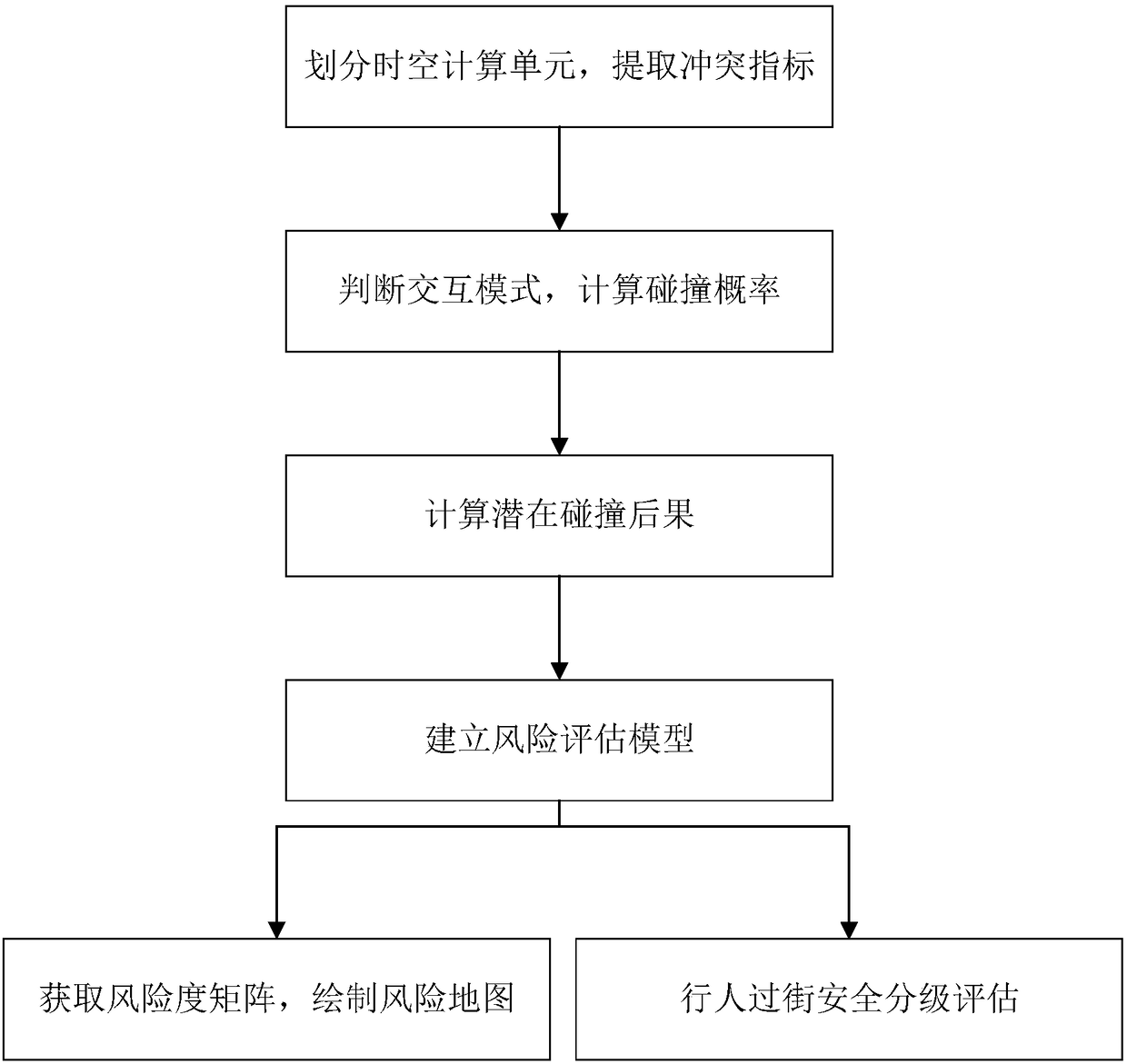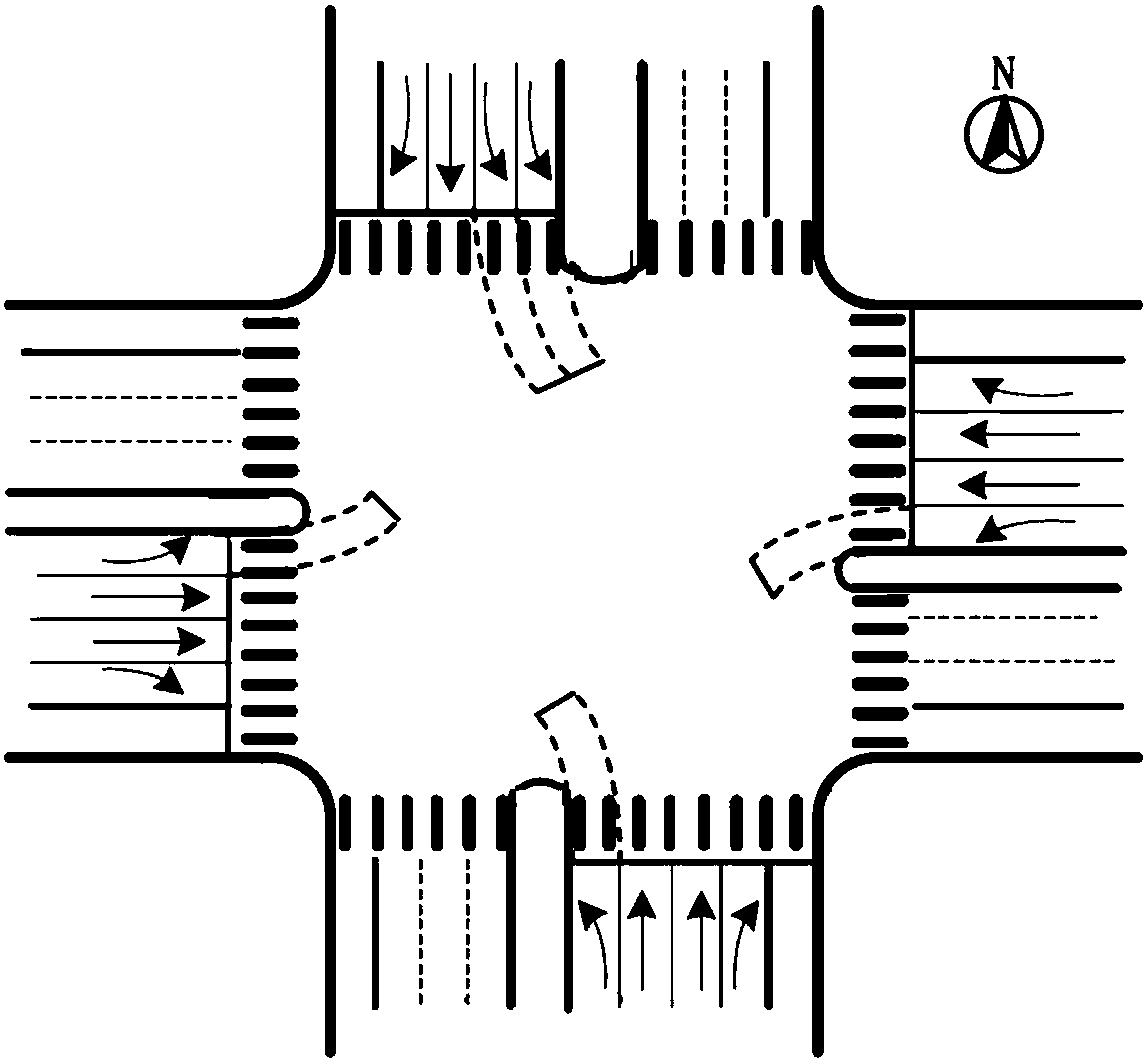Method for assessing crossing risk of pedestrians at intersection on basis of trajectory data
A technology for pedestrian crossing and trajectory data, applied in data processing applications, traffic control systems for road vehicles, traffic control systems, etc., can solve problems such as stopping, and achieve the effect of comprehensive risk assessment
- Summary
- Abstract
- Description
- Claims
- Application Information
AI Technical Summary
Problems solved by technology
Method used
Image
Examples
Embodiment Construction
[0051] The present invention will be described in detail below in conjunction with the accompanying drawings and specific embodiments.
[0052] The present invention relates to a pedestrian crossing risk assessment method at an intersection based on trajectory data, such as figure 1 As shown, the method includes the following steps:
[0053] (1) Divide space-time calculation units and extract conflict indicators
[0054] The encounter event where the time difference between pedestrians entering the crosswalk and motor vehicles passing the stop line is less than 10s is recorded as a human-vehicle interaction event, and conflict indicators are extracted; conflict indicators include: TTC, PET and GT. Calculate the values of TTC and GT multiple times at intervals of 0.12s, and take the minimum value of TTC in the entire interaction process min and GT min for the final value. The value of PET is only calculated once at the end of the interaction process.
[0055] (2) Judging...
PUM
 Login to View More
Login to View More Abstract
Description
Claims
Application Information
 Login to View More
Login to View More - R&D
- Intellectual Property
- Life Sciences
- Materials
- Tech Scout
- Unparalleled Data Quality
- Higher Quality Content
- 60% Fewer Hallucinations
Browse by: Latest US Patents, China's latest patents, Technical Efficacy Thesaurus, Application Domain, Technology Topic, Popular Technical Reports.
© 2025 PatSnap. All rights reserved.Legal|Privacy policy|Modern Slavery Act Transparency Statement|Sitemap|About US| Contact US: help@patsnap.com



